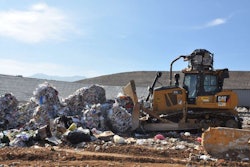The New York Times on Tuesday prominently reported the plans of a hedge fund manager who intends to splatter the world with $100-million worth of ads against politicians who question global warming theory.
Billionaire Tom Steyer, according to the paper:
“plans to spend as much as $100 million during the 2014 election seeking to pressure federal and state officials to enact climate change measures through a hard-edge campaign of attack ads against governors and lawmakers.”
That, in a nutshell, is what’s wrong with almost everything in science, politics, journalism and public policy today. Even if global warming, climate change–whatever they call it–is real (and I’m not saying it isn’t), throwing advertising money at it won’t change anything. At best, Steyer may get a few Democrats elected. But once Obama is gone the Republicans will likely take over the Senate and end or roll back eight years of environmental activism.
If your goal is to cut greenhouse gasses, you must first understand that all the significant reductions in atmospheric carbon in the last 20 years have come from the work of engineers. Environmental solutions require engineering, but the money, the media, the ad agencies, the politicians…all they do is talk and incite ill-considered anger. The leaven of the Pharisees.
The only political initiatives that have reduced carbon emissions were the CAFE standards (corporate average fuel economy), enacted in 1975, and the diesel emissions reductions (Tier 1-4 and the on-road counterparts) that began in the 1990s. Both came about long before the likes of Al Gore and Tom Steyer started their respective propaganda campaigns.
Remember Kyoto? In 1997 all manner of government regulators and environmental activists from 192 countries met in Kyoto, Japan and came up with a plan for every country in the world to reduce its carbon footprint. The media went crazy, the cheerleading was deafening. But the U.S. Senate refused to ratify the treaty since the restrictions on energy use would have likely harmed our economy.
Fast forward two decades and lo and behold, the U.S. has actually reduced its carbon footprint below what was originally called for at Kyoto. And we did this without the government, without treaties, without the ceaseless nagging of environmental doomsayers. How? One word:
Fracking.
George Mitchell, a Texas oil man, engineer, and the son of a poor Greek immigrant, figured out a way squeeze the last few barrels of oil out of some played out wells in West Texas. In the process Mitchell discovered the technique that unlocked vast quantities of not only oil, but clean-burning natural gas.
And since this gas has started replacing coal in our nation’s power plants it has enabled the United States to reduce our atmospheric carbon output by 14 percent since 2007, exceeding the requirements suggested by Kyoto.
From a Slate article last year:
“The reduction is even more impressive when one considers that 57 million additional energy consumers were added to the U.S. population over the past two decades. Indeed, U.S. carbon emissions have dropped about 20 percent per capita, and are now at their lowest level since Dwight D. Eisenhower left the White House in 1961.”
More from Slate:
“David Victor, an energy expert at UC-San Diego, estimates that the shift from coal to natural gas has reduced U.S. emissions by 400 to 500 megatons CO2 per year. To put that number in perspective, it is about twice the total effect of the Kyoto Protocol on carbon emissions in the rest of the world, including the European Union.”
We are the only country in the world to meet its Kyoto carbon numbers. And our contribution alone met the entire planet’s Kyoto goals times two. We did it with hard-nosed, oil field engineering and free markets. Not attack ads. Not wind, not solar.
This is a far cry from the biofuel boondoggles our command-and-control government and its allies in the green movement have been forcing us to endure over the last 20 years.
If you want to clean up the planet, the first step is to get your hands dirty. There is no more exciting discipline today that the work being done by engine, powertrain and hydraulics engineers in places like Ford, Cummins, Eaton and Bosch. These people, together with chemical engineers, geologists and the people working in the petrochemical industry are transforming the world, squeezing every BTU of efficiency out of every fuel, component and system used in our energy-driven economy.
You want to cut emissions from heavy equipment and trucks? Better machine and truck efficiency from telematics and GPS/GNSS machine control from the likes of Trimble and Topcon can reduce fuel used by 15-25 percent. No blame/shame, no attack ads, no puffed-up politicians. Just America’s and brightest doing amazing work, and contractors and fleet owners working hard and smart to gain a competitive edge.
Somebody please tell the editors of the New York Times. This is a story they’ve obviously overlooked.












